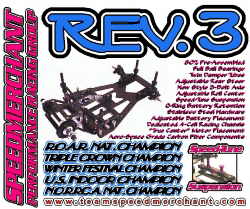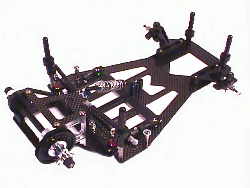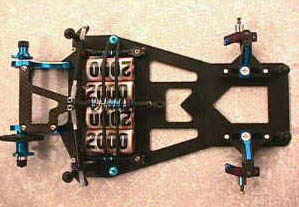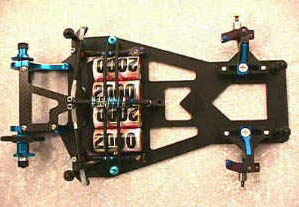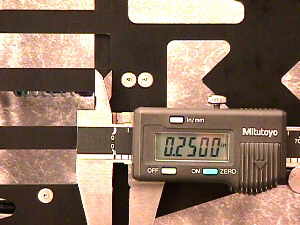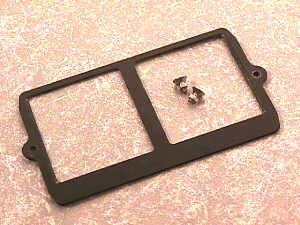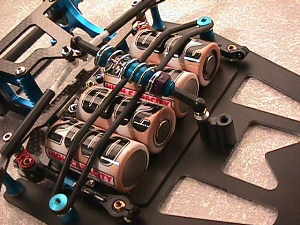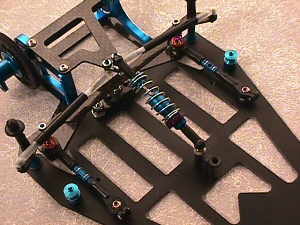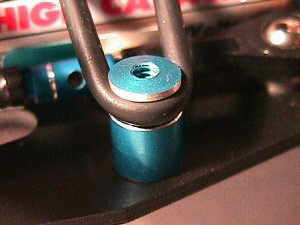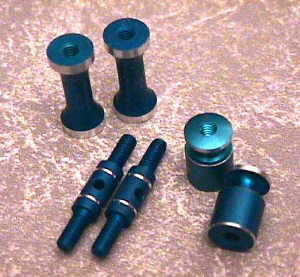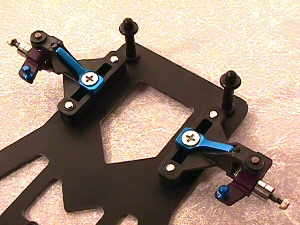 This is a close up of the "old skool" front end used by many of our team drivers. Just a note about this. Here at SpeedMerchant, we do a lot of testing, and I can tell you on our car the old style front end works better about 90% of the time. Here's what we've found over the past few seasons. This is a close up of the "old skool" front end used by many of our team drivers. Just a note about this. Here at SpeedMerchant, we do a lot of testing, and I can tell you on our car the old style front end works better about 90% of the time. Here's what we've found over the past few seasons.
The new stlye front end is better on bumpy tracks. Hopefully yours' isn't like that, but in our travels we've been on some pretty scary surfaces. In these cases, we put the new style front ends on the cars.
The "old skool" (yes, I realize that's not how school is spelled) front end gives our car more steering entering a corner than the new style front end.
In the center and exit of the turn it has slightly less steering than the new style front end.
This tends to compliment our chassis' handeling characterisitcs. Because of having all the weight in the centerline of the chassis, the Rev.3 doesn't transfer as much weight as most 12th scale cars do when entering a sharp corner, this can lead to "push" or "understeer". Like I said earlier the old style front end remedies this situtaion.
Once you're in the corner the Rev.3 makes it VERY easy change your line(passing), and to drive tight and fast. Why? Because The Rev.3 didn't transfer all that weight when it initially went into the corner, it now doesn't have to wait for the transfered weight to rebound and then settle back down. The Rev.3 stays flat through the entire corner. Remember, when ever you have any motion other than forward, ie. side to side swaying, you are loosing foward momentum. That's a fact. So a flat chassis equals extra speed and efficiency that wasn't robbed in the corners.
The "old skool" front end has much less "slop" than the new style. Whenever you have "play" in a suspension, either from wear or poor assembly you are just asking for inconsistency.
The "old skool" front end weighs about 1/2 of what a new one weighs. This lowers your cars total weight as well as lowering its' center of gravity.
The "old skool" front end can take a good hit and not go out of tweak. The new style front end is notorious for "moving" after a hard hit and then throwing the whole car out of tweak. Tons-o-times over the past few years drivers have brought me cars to look at with the complaint "It's out of tweak." After going through the car, guess where the problem is usually found. The front end. Either the delrin pivot balls are bound up, a spring is collapsed, or just too much play in the parts, etc, etc, etc.
Remember the K.I.S.S. theory on racing. Keep It Simple Stupid.
|
